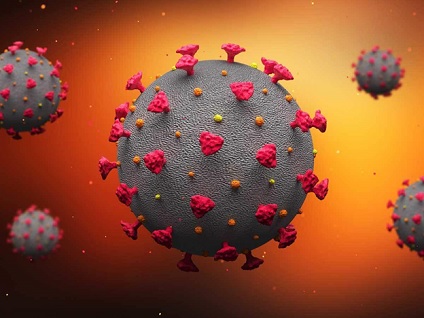
The coronavirus disease 2019 (COVID- 19) is caused by severe acute respiratory syndrome coronavirus (SARS-CoV-2) and became pandemic after emerging in Wuhan, China, in December 2019. Several studies have been conducted to understand the key features of COVID-19 and its public health impact. However, the prognostic factors of COVID-19 are not well studied in the African setting. According to scholars, several reasons have caused African countries from conducting the study. Lack of proper human resource together economic constraints and other facilities are cited as a challenge to conduct the study. However, there is a common census that coordinated effort of every continent and nation will play key role to prevent the spread of the virus and find remedies.
COVID-19 has sparked fears of an impending economic crisis and recession. Social distancing, self-isolation and quarantine, travel restrictions and border shut downs have led to a reduced workforce across all economic sectors and caused many jobs to be lost. Schools have been closed down, and the need for commodities and manufactured products has decreased.
Along with its high infectivity and fatality rates, there has been mass fear of COVID-19, termed as “coronaphobia”, that has generated a plethora of psychiatric manifestations across the different strata of the society. The COVID-19 itself, multiplied by forced quarantine to combat the disease applied by nationwide lockdowns can produce acute panic, anxiety, obsessive behaviors, hoarding, paranoia, depression, and post-traumatic stress disorder (PTSD).
Several socio-demographic, clinical, immunological and nutritional factors are associated with COVID-19 disease progression. Evidence shows that COVID-19 disease progression is worse in people with suppressed immunity due to old age, pre-existing health conditions, and genetic conditions. However, a comprehensive understanding of the underlying immunological process, particularly within cellular immunity, is still not well defined. The clinical disease spectrum of the SARS COV-2 ranges from subclinical or manifesting as unremarkable respiratory symptoms to severe respiratory complications such as pneumonia and respiratory distress.
There is growing literature highlighting obesity as a significant risk factor for the development of severe COVID-19. Body mass index (BMI) is an anthropometric measure used to assess obesity risk and has been observed as a risk factor in MERS-CoV and influenza. A recent systematic review showed that high BMI plays a significant role in COVID-19 severity in all ages, especially in the elderly population. Obesity is associated with increased severity and mortality in pandemic H1N1 influenza and other respiratory viruses.
Evidence on the effect of COVID-19 on pregnancy and its outcomes seems to be controversial. In some studies, pregnant mothers with confirmed COVID-19 infection were discharged without any major complications after giving birth. However, severe maternal morbidity resulting from COVID-19 and perinatal deaths has been documented in other studies.
There is also limited evidence about in utero infection and early positive neonatal testing. For example, a prospective cohort study conducted among pregnant women admitted to the hospital with confirmed SARS-CoV-2 infection in the UK revealed that 12 (5%) of 265 infants tested positive for SARS-CoV-2 RNA, six of them within the first 12 h after birth. Contrary to this, infection has not been found in neonates delivered from pregnant women with COVID-19 based on a report from Hubei Province, China. Further research, therefore, is required to determine the effect of COVID-19 on pregnancy and birth outcomes in our situation.
Nutrition is a key determinant of health. More importantly, it is part of the treatment regimen for acute and chronic diseases and applies particularly to ailments for which an etiologic treatment has not yet been discovered and validated. An adequate diet is necessary to provide energy for the body’s functions and nutrients to build and repair tissues, prevent sickness, and help the body heal from illness. A balanced diet also has a vital role in bolstering the immune response of an infected person against RNA viral infections. There is sufficient evidence to demonstrate that the immune response can be weakened by inadequate nutrition. The role of some nutrients in immune function and infectious diseases is well established, such as vitamin D.
In recent studies, COVID-19 is shown to be commonly complicated with coagulopathy, and the management of thromboembolism has significant importance in reducing mortality and morbidity. This indicates that a severe cytokine storm induces SARS-Cov-2 to lead to the coagulation cascade, causing thromboembolism, which is linked to abnormal parameters such as increases in fibrin, fibrin degradation products, fibrinogen, and D-dimer.
Furthermore, immobility, systemic inflammation, platelet activation, endothelial dysfunction, and stasis of blood flow have been reported as the predisposing factors of thromboembolism. The WHO recommended the use of low molecular weight heparin (e.g., enoxaparin), according to local and international standards, to prevent venous thromboembolism, when not contraindicated in COVID-19 patients. However, the incidence of venous thromboembolism in COVID-19 patients hospitalized and under thromboprophylaxis is unclear.
To understand the negative impacts of COVID-19 on public health and key features pertinent to the disease, various studies are under investigation at the global level and they are contributing to delineating the characteristics of the disease and its lethality.
As of August 03, 2021, there have been 200,508,148 confirmed cases and 4.26 million deaths reported worldwide and nationally 281,300 confirmed cases and 4,395 deaths reported. To this end, the COVID-19 Global Research and Innovation Forum recommended each country and region to conduct research and generate evidence in their respective local context to strike the right balance between stopping transmission now and prepare for the future.
Currently, it is recognized that a ‘one size fits all’ approach towards the design and implementation of interventions may not be appropriate. Therefore, global priorities, protocols, and intervention assessments have to be contextualized and adjusted to local needs and realities, including the translation of results.
(Source: bmcinfectdis.biomedcentral.com)
COMPILED BY LEULSEGED WORKU
The Ethiopian Herald 28 October 2021





